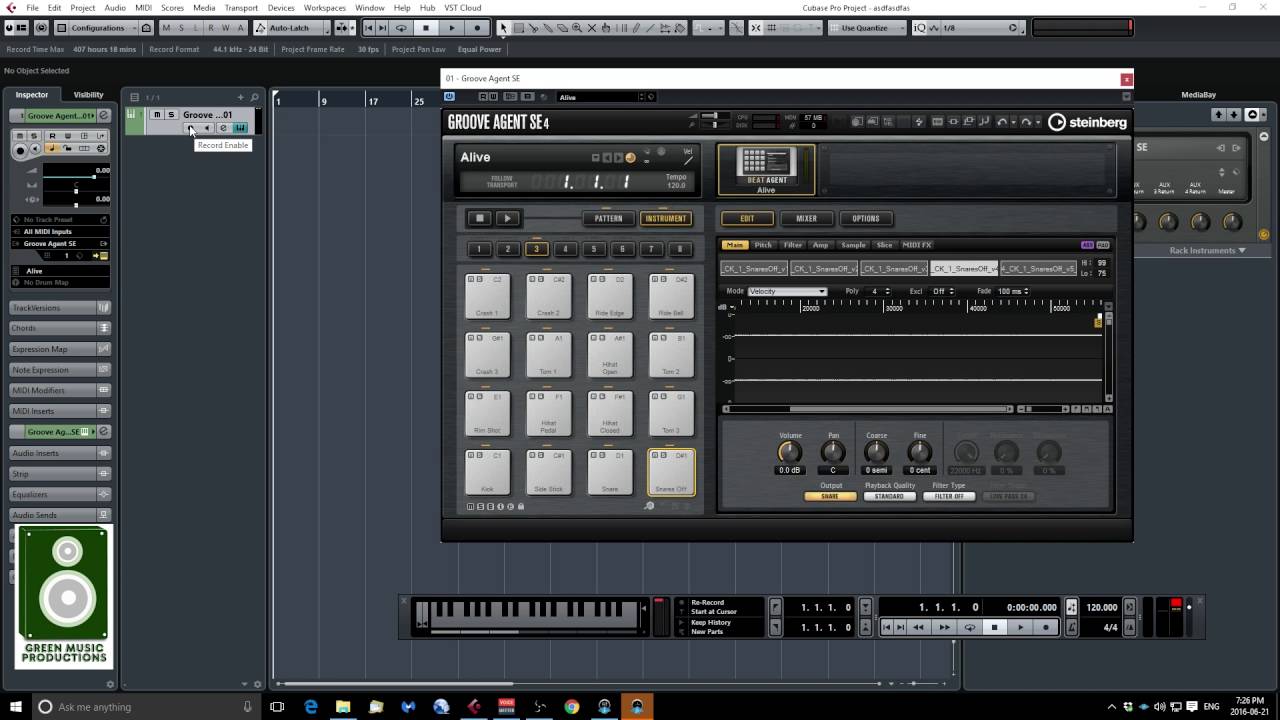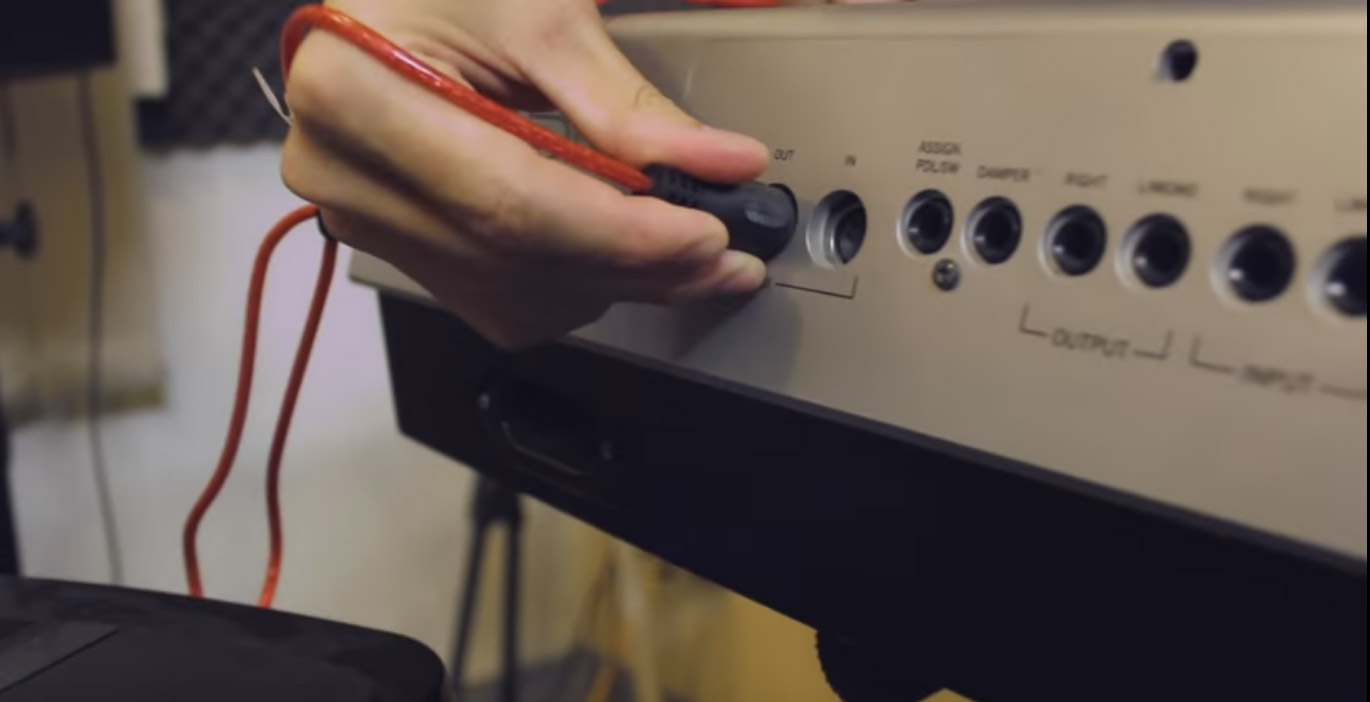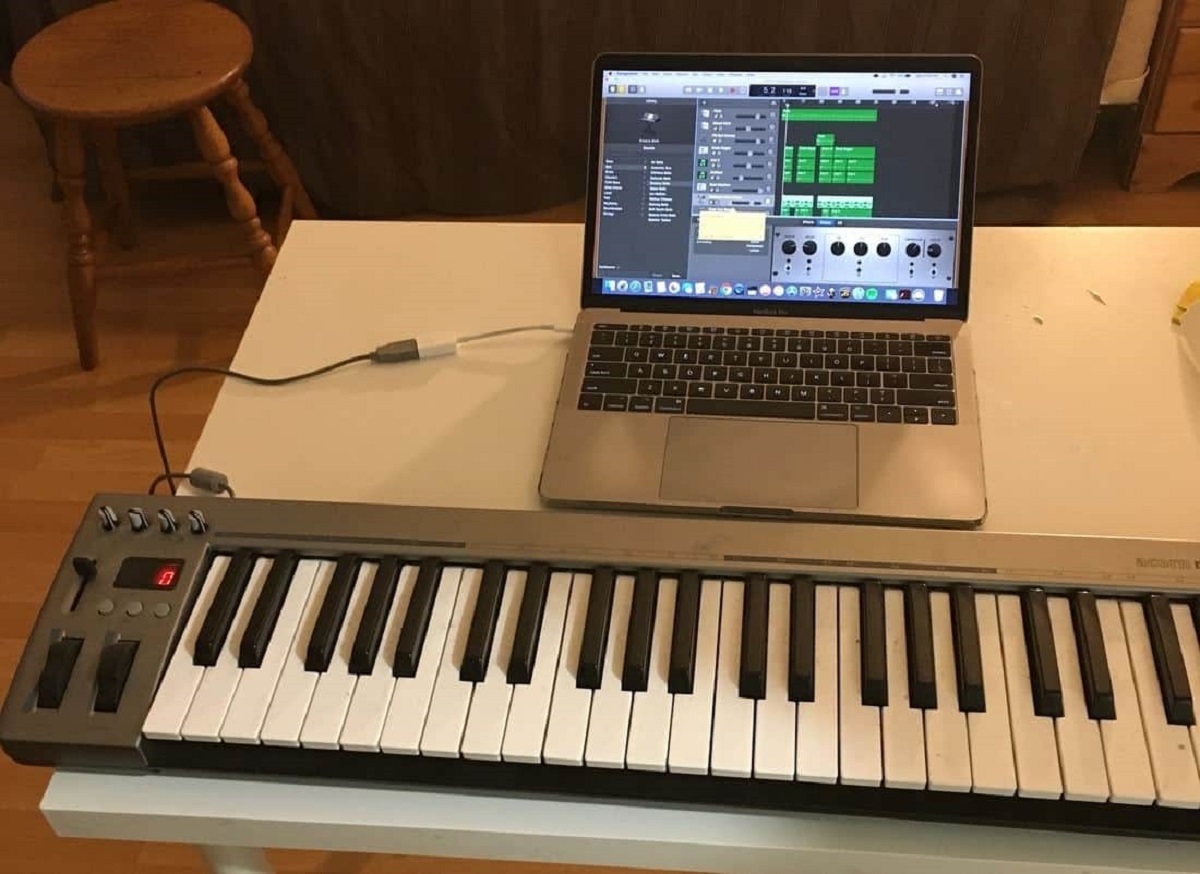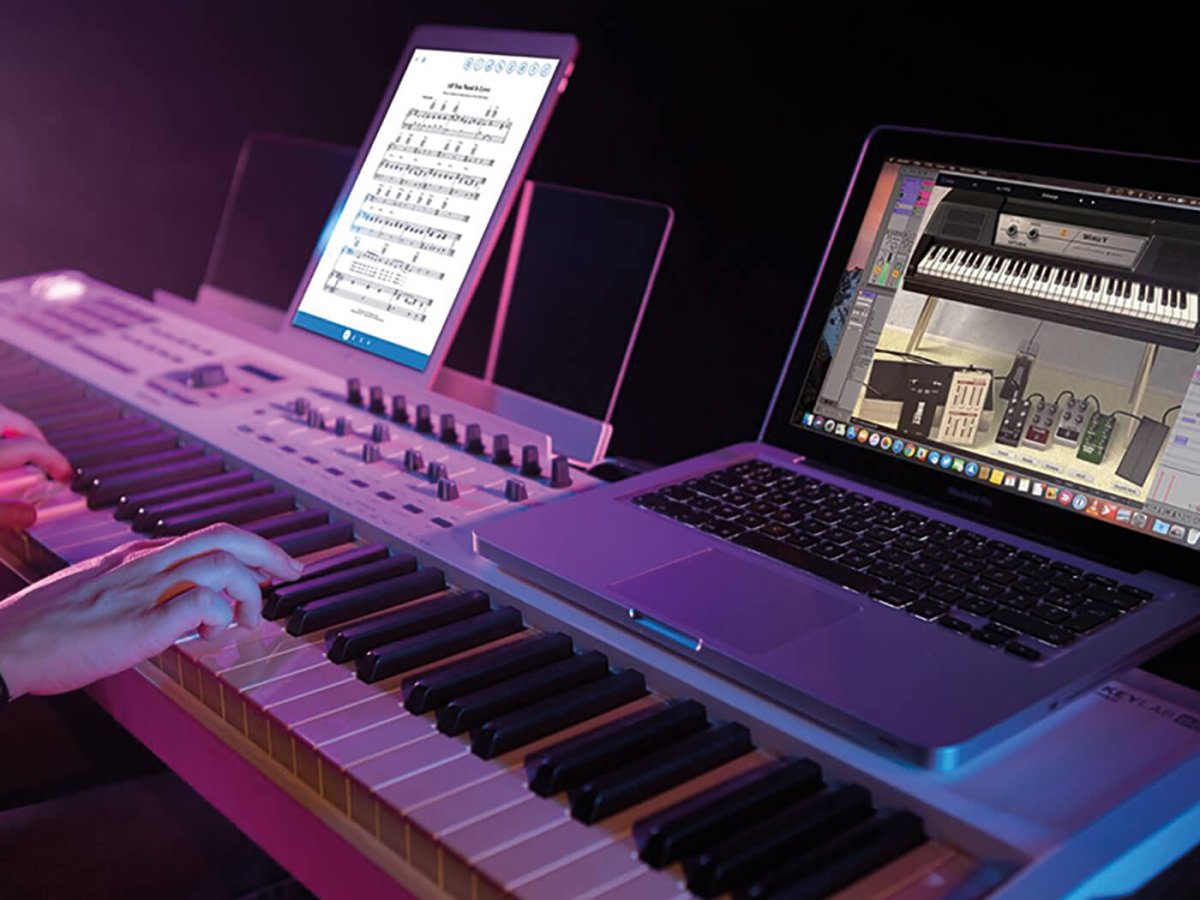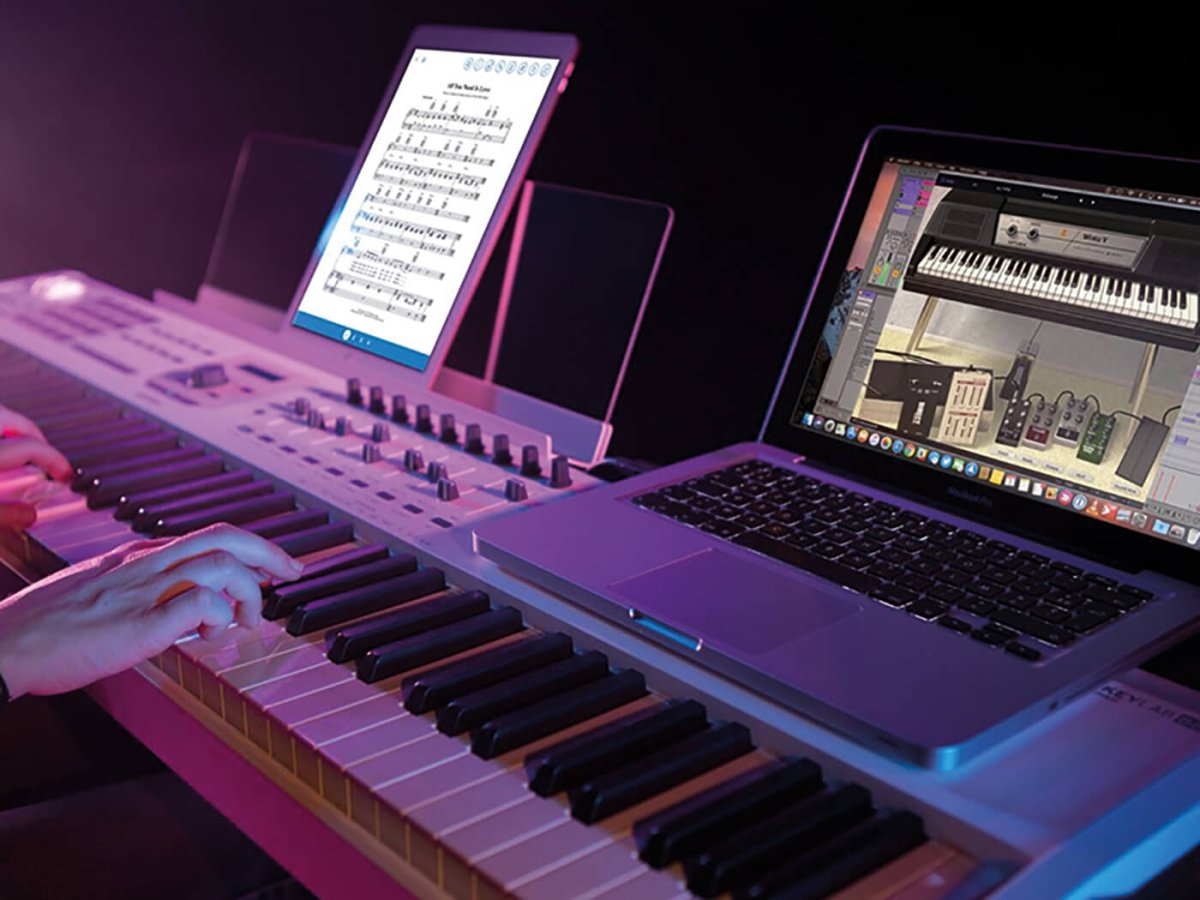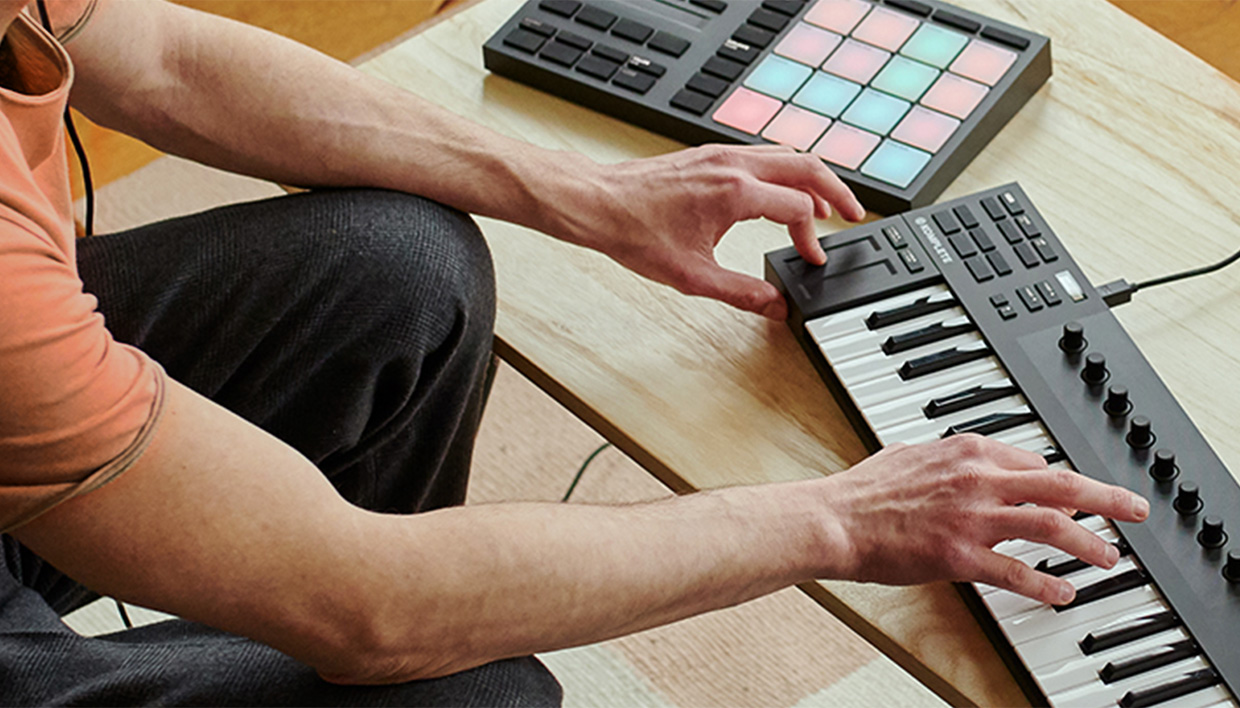Introduction
Welcome to the exciting world of music creation with MIDI keyboards and Famitracker! If you're passionate about composing chiptune music or creating 8-bit soundtracks, then you're in the right place. Famitracker is a powerful music production software that emulates the sound capabilities of the Nintendo Entertainment System (NES), allowing you to craft authentic retro tunes. When paired with a MIDI keyboard, Famitracker becomes even more versatile, enabling you to seamlessly translate your musical ideas into captivating chiptune compositions.
In this guide, we'll explore the seamless integration of MIDI keyboards with Famitracker, providing you with the essential knowledge and techniques to elevate your music production experience. Whether you're a seasoned musician or a budding chiptune enthusiast, this tutorial will equip you with the skills to harness the full potential of your MIDI keyboard within the Famitracker environment.
By the end of this guide, you'll be adept at setting up your MIDI keyboard in Famitracker, mapping MIDI controls to instruments, and leveraging valuable tips to optimize your workflow. So, let's dive in and unlock the boundless creativity that awaits when you combine the expressive capabilities of a MIDI keyboard with the nostalgic charm of Famitracker. Get ready to embark on a musical journey that merges the best of classic gaming nostalgia with modern music production techniques.
Getting Started with MIDI Keyboards and Famitracker
Before delving into the intricacies of using a MIDI keyboard in Famitracker, it’s essential to understand the fundamental concepts behind both the MIDI protocol and Famitracker’s interface. MIDI, which stands for Musical Instrument Digital Interface, serves as a universal communication standard for electronic musical instruments, including keyboards, synthesizers, and drum machines. This protocol enables seamless interaction between MIDI-compatible devices, allowing for the transmission of musical data such as note triggers, velocity, and control changes.
Once you’ve familiarized yourself with the basics of MIDI, it’s time to acquaint yourself with Famitracker, a specialized software designed for creating music that emulates the audio hardware of the NES. Famitracker provides a platform for composing chiptune music using authentic 8-bit sounds, making it an ideal choice for those seeking to capture the essence of classic video game soundtracks.
Now, let’s explore the initial steps for integrating your MIDI keyboard with Famitracker. Begin by connecting your MIDI keyboard to your computer using a USB cable or MIDI interface. Ensure that the necessary drivers are installed to facilitate seamless communication between your MIDI keyboard and the computer. Famitracker should recognize your MIDI keyboard as a viable input device, allowing you to harness its expressive capabilities within the software.
As you embark on this musical journey, keep in mind that Famitracker’s interface may initially appear daunting, especially for newcomers. However, with perseverance and a willingness to explore its features, you’ll gradually acclimate to its layout and functionality. Famitracker’s interface comprises distinct channels for different sound types, including pulse, triangle, noise, and DPCM, each contributing to the rich sonic tapestry of chiptune music.
With a solid understanding of MIDI principles and a basic familiarity with Famitracker, you’re poised to unlock the synergistic potential of your MIDI keyboard within the Famitracker environment. As we proceed, you’ll gain practical insights into setting up your MIDI keyboard, mapping controls, and leveraging its capabilities to craft compelling chiptune compositions.
Setting Up Your MIDI Keyboard in Famitracker
Now that you’ve connected your MIDI keyboard to your computer and familiarized yourself with Famitracker’s interface, it’s time to configure your MIDI keyboard within Famitracker to seamlessly integrate it into your music production workflow. Famitracker offers robust support for MIDI input, allowing you to leverage the expressive capabilities of your MIDI keyboard to enrich your compositions.
Begin by accessing Famitracker’s settings and navigating to the Input menu. Here, you can select your MIDI keyboard as the designated input device. Famitracker provides options to customize MIDI input settings, including note velocity, pitch bend range, and modulation sensitivity, empowering you to tailor the behavior of your MIDI keyboard to suit your creative preferences.
Once your MIDI keyboard is recognized by Famitracker, you can verify its functionality by triggering notes and exploring the real-time responsiveness of the software to your musical input. Famitracker’s visual feedback, such as the highlighting of triggered notes on the interface, enables you to seamlessly translate your musical ideas from the MIDI keyboard to the digital realm.
It’s essential to ensure that your MIDI keyboard’s range is appropriately mapped within Famitracker, aligning with the desired pitch and octave configurations for your compositions. Famitracker allows for flexible octave shifting, enabling you to navigate the sonic landscape with ease and precision using your MIDI keyboard.
Furthermore, Famitracker’s MIDI setup facilitates the assignment of MIDI controls to various parameters within the software, offering a dynamic means of modulating instrument settings and effects in real time. By assigning MIDI knobs, sliders, or buttons to specific parameters in Famitracker, you can infuse your compositions with expressive nuances and dynamic shifts, adding depth and character to your chiptune creations.
With your MIDI keyboard seamlessly integrated into Famitracker, you’re now primed to harness its expressive potential to compose captivating chiptune music. As we delve deeper into the intricacies of MIDI mapping and instrument control, you’ll gain valuable insights into leveraging your MIDI keyboard to elevate your music production endeavors within the Famitracker environment.
Mapping MIDI Controls to Famitracker Instruments
One of the key advantages of using a MIDI keyboard in Famitracker is the ability to map MIDI controls to various instruments and parameters, empowering you to modulate and shape your chiptune sounds with precision and expressiveness. Famitracker’s robust MIDI mapping capabilities provide a seamless avenue for integrating your MIDI keyboard’s controls into the music production process.
Within Famitracker, you can assign MIDI controls, such as knobs, sliders, and buttons on your MIDI keyboard, to manipulate a diverse array of instrument settings and effects. This dynamic mapping enables real-time control over parameters such as volume, pitch, vibrato, tremolo, and more, allowing for nuanced articulation and sonic exploration.
To begin mapping MIDI controls, navigate to Famitracker’s instrument settings and access the MIDI mapping interface. Here, you can assign specific MIDI messages, such as control change (CC) messages or note velocity, to target parameters within the selected instrument. For instance, you can assign a MIDI knob to adjust the vibrato depth of a pulse wave instrument, granting you the flexibility to infuse your melodies with subtle or dramatic pitch modulations on the fly.
Furthermore, Famitracker’s MIDI mapping extends beyond individual instruments, enabling global control over master volume, tempo, and other overarching settings. By mapping MIDI controls to these global parameters, you can orchestrate dynamic shifts and transitions throughout your compositions, adding depth and emotive impact to your chiptune creations.
As you engage with MIDI mapping in Famitracker, it’s crucial to experiment with different control assignments and observe their impact on the sonic character of your compositions. The tactile nature of MIDI control manipulation fosters an intuitive and immersive music-making experience, allowing you to sculpt and refine your chiptune sounds with a hands-on approach.
By harnessing the power of MIDI control mapping in Famitracker, you can imbue your chiptune compositions with an unparalleled level of expressiveness and dynamism. As we delve into practical tips for optimizing your MIDI keyboard usage in Famitracker, you’ll discover innovative techniques to elevate your music production workflow and unleash the full potential of your MIDI keyboard as a creative tool within the nostalgic realm of chiptune music.
Tips for Using a MIDI Keyboard in Famitracker
As you continue to explore the synergies between your MIDI keyboard and Famitracker, consider the following tips to enhance your music production experience and maximize the creative potential of your setup:
- Customize MIDI Control Assignments: Experiment with assigning MIDI controls to a diverse range of instrument parameters and global settings in Famitracker. By tailoring the MIDI control assignments to align with your workflow and creative vision, you can streamline the music-making process and unlock new avenues for sonic exploration.
- Embrace Real-Time Performance: Leverage the real-time responsiveness of your MIDI keyboard to infuse your chiptune compositions with expressive nuances during live performances and recording sessions. Utilize pitch bend, modulation, and other MIDI controls to imbue your melodies with dynamic articulations and emotive flourishes.
- Explore Layering and Multitimbral Capabilities: Capitalize on your MIDI keyboard’s multitimbral capabilities to layer multiple instrument channels in Famitracker, creating rich and textured chiptune arrangements. By leveraging different MIDI channels and instrument assignments, you can craft intricately layered soundscapes with depth and complexity.
- Utilize Sustain and Expression Pedals: If your MIDI keyboard features sustain and expression pedal inputs, integrate these controllers into your Famitracker workflow to introduce sustained notes, dynamic swells, and nuanced phrasing. These pedals offer an additional dimension of control over your chiptune performances, enhancing their emotive impact.
- Experiment with Arpeggiation and Sequencing: Harness the arpeggiation and sequencing capabilities of your MIDI keyboard to create captivating rhythmic patterns and arpeggiated motifs within Famitracker. By integrating these features into your compositions, you can introduce intricate rhythmic textures and hypnotic arpeggios to elevate your chiptune arrangements.
- Stay Open to Creative Exploration: Embrace a spirit of experimentation and creative exploration as you integrate your MIDI keyboard with Famitracker. Allow yourself the freedom to push the boundaries of traditional chiptune conventions and discover innovative ways to leverage your MIDI keyboard’s capabilities in crafting unique and compelling musical expressions.
By incorporating these tips into your music production endeavors, you’ll enrich your chiptune compositions with a wealth of expressive possibilities, breathing life into your musical visions through the seamless integration of your MIDI keyboard with Famitracker. As you continue to refine your skills and expand your sonic palette, the fusion of classic 8-bit aesthetics with modern MIDI-driven creativity will propel your chiptune productions to new heights of artistry and innovation.








